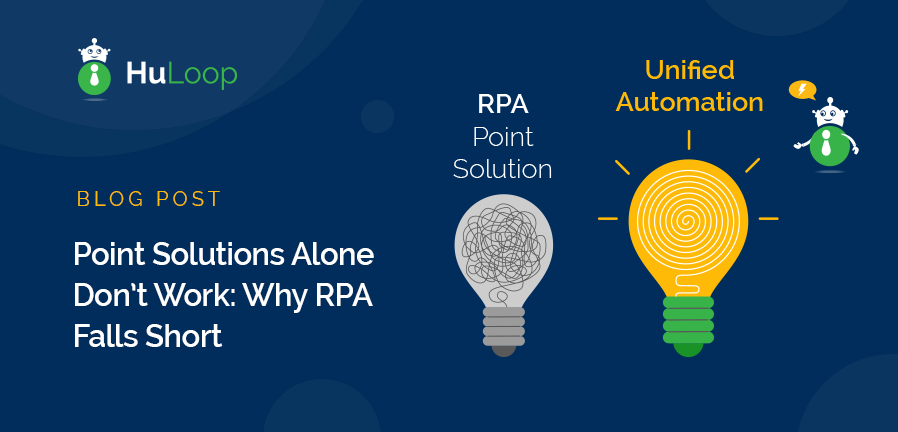Despite its promises, RPA as a standalone, point solution often creates more problems than it solves. It addresses symptoms — not root causes. And in many cases, it exacerbates inefficiencies instead of eliminating them. The truth is, point solutions like RPA aren’t built to handle the complexity and interconnectedness of modern business processes. Organizations need a broader work optimization solution that integrates RPA as part of a unified approach. As a result, the future lies in unified automation platforms: end-to-end systems designed to orchestrate and optimize workflows holistically, powered by advanced AI and machine learning.
1. Fragmentation Leads to ChaosAt its core, RPA is a point solution designed to tackle specific tasks. But without a broader work optimization strategy, these tasks remain isolated and disconnected from the larger business objectives. RPA is great at automating repetitive processes — like data entry or invoice processing — but it operates in silos. Most organizations don’t have just one process to automate; they have dozens, if not hundreds, spanning multiple departments, systems, and workflows.
Deploying RPA across these processes often results in a fragmented ecosystem of bots, each doing its own thing without coordination. As these bots multiply, managing them becomes a nightmare. You need to monitor, update, and troubleshoot each one individually. This lack of cohesion leads to bottlenecks, errors — and ultimately, chaos.
. No Built-in IntelligenceRPA is, by design, rules-based. While it excels at following structured workflows, it lacks the intelligence to handle exceptions or adapt to changes. If a process deviates even slightly from the predefined rules, the bot fails. This means humans need to constantly step in to manage exceptions, undermining the very efficiency RPA was supposed to deliver.
In contrast, modern business processes demand agility and adaptability. They need systems that can learn, predict, and evolve. It’s not enough simply to automate: businesses need a platform that can orchestrate, streamline and optimize. RPA, on its own, simply isn’t equipped to handle this level of complexity. For true resilience and adaptability, businesses require a unified platform that combines RPA with AI-driven orchestration and optimization.
3. Hidden Costs and Maintenance HeadachesThe “set it and forget it” promise of RPA is a myth. Bots require constant maintenance to ensure they’re functioning correctly, especially in dynamic environments where systems, software, or processes frequently change. Every tweak to an underlying system can break a bot, requiring reprogramming and testing.
In addition, point solutions often require extensive integration resources to work with a variety of existing systems within an organization. For businesses chasing quick wins with RPA, this realization can be both frustrating and expensive.
4. Lack of End-to-End OptimizationWhile point solutions focus on individual tasks, they cannot deliver true operational efficiency without being part of a larger work optimization solution. RPA doesn’t identify areas to improve or streamline, address how tasks fit into the larger workflow, or how they impact upstream and downstream processes. It’s like putting a band-aid on a broken bone — the underlying issues remain unresolved. A unified platform ensures that processes are optimized holistically, addressing inefficiencies across the entire workflow.
